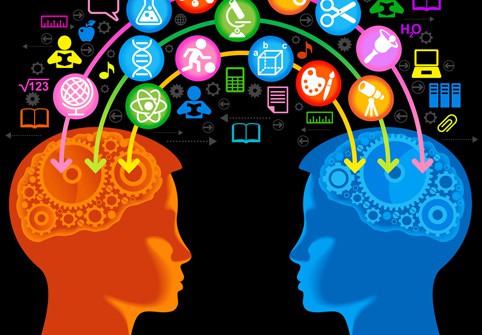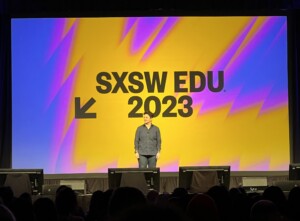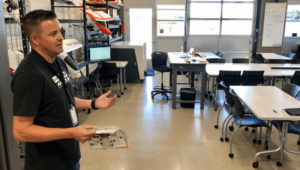Shaping Communities as the World’s Classrooms

“As learning resources proliferate in neighborhoods and cities around the world,communities will become the world’s classrooms. Learning geographies will diversifyas some communities become learning deserts barren of learning resources, while others become oases teeming with dynamic learning ecosystems.” – KnowledgeWorks‘ 2020 Forecast
Never before has the opportunity been greater to use existing resources differently to benefit student learning. Shrinking school budgets and rising expectations are challenging schools and communities across the country to think and act differently and use their resources more efficiently and effectively to ensure all students reach higher standards.
As this New Normal threatens students with fewer options and thinner support, schools and communities need to look around at the assets they have and think about how to restructure them to more fully take advantage of opportunities for learning.
Can communities truly become the world’s classrooms, and thus effectively tap into community resources in a way that integrates them into everyday classroom learning? We think that can happen by fusing the best practices of collective impact and blended learning – two approaches that at their core are about using existing resources differently.
Collective Impact
Six years ago, leaders in Cincinnati and Northern Kentucky had an idea. There had to be a way to help communities more systematically support students’ success in schools. They thought: If we could figure this out, everybody would win.
As it turns out, they had a good idea. In 2006, community leaders, supported by KnowledgeWorks, began to think about transforming the Cincinnati/Northern Kentucky area civic infrastructure in order to collectively impact learning in the region. Ultimately they figured out how to transform the rhetoric of community collaboration into networks of action connected to clear and powerful outcomes. The Strive Partnership blossomed, and its approach – creating shared community vision, using evidence-based decision making, forging collaborative action, and ensuring sustainability – is now taking root across the U.S. We’re now midstream a new era that will become increasingly characterized by more and more powerful platforms for driving collective intelligence and action.
Blended Learning
At the same time Strive was on its way up, online learning was on the rise. More recently, online models have given way to a new generation of blended models that bring together the best of computer-based and teacher-led instruction. These blended learning models allow for differentiated instruction and more personalized learning. Teachers are often able to handle larger class sizes because technology – such as computer-driven instruction for content/skills that require remembering and practice – allows teachers to work with smaller groups as students rotate in and out of different learning experiences.
But even the best of blended learning is largely bounded in a classroom, in what we know as school. We’re finding adults increasingly working together in teams inside the school in new blended models, but the other half of the team they need is waiting outside.
To begin, we asked ourselves how a collective impact partnership could help scale the simple notion of flipping the classroom or more seriously, blending a district? Blending a community?
Creating a Learning Oasis
Some schools and individual teachers have always made strides toward providing authentic, community-based learning for their students. The quality and implementation of such experiences varies widely, however, and even when successful the experiences nearly always remain limited to a few classrooms. This kind of authentic, connected learning can be powerful but is ad-hoc, likely never captured or tested, and is therefore harder to replicate. Unfortunately over time the burden of individual teachers creating and managing community-based learning, among other obligations, takes its toll.
In after school programs among community-based organizations (CBOs), learning is rarely aligned to school curriculum or goals, and little communication, if any, may occur between school and community. It is not uncommon for adults to struggle to provide content or feedback to students that is meaningful, or that meets the student at their level. Many schools and CBOs lack the necessary infrastructure, protocols or digital tools that could amplify blended and connected learning. In fact, in July 2011, the U.S. Department of Education and The After-School Corporation (TASC) convened a meeting that helped document the opportunities and challenges of Blended Learning Partnerships for Community-based Organizations, inspiring thought leadership on these issues.
Clearly, to move from a system whose aim is to educate all students to one designed to educate each student individually, significant change is required. This is not a task a teacher, school, district, or community-based organization can do on its own. To date system-wide or more dramatic progress has been curbed. We believe a fusion of blended, connected learning–and collective impact methodologies–can change the occasion. When school and community efforts are part of a deliberate and concerted plan, with shared learning goals, objectives and practices powered by technology, true change can occur.
We have learned through the Strive Cradle to Career Framework that the power of a community can amplify the ability of a district to achieve higher student gains by organizing and focusing community assets around students and schools. For the first time, we are looking at bringing the organization and application of resources directly into the teaching and learning sphere in a dynamic and systemic way, taking collective impact to a new level.KnowledgeWorks is partnering with Education Elements, an experienced implementer of blended learning, and the Reynoldsburg City Schools in Ohio to create such a “blended community.” Together we have begun to earnestly challenge the confinement of blended learning to classrooms and connected learning to what has largely been the after-school domain.
Fusing collective impact with blended, connected learning provides a nexus point through which multiple providers can systematically connect, unlock, and reallocate existing resources to provide young people with access to more/quality learning opportunities than may be available under distinct and separate organizations.
Put simply, we’re on a path that we would like to travel with others; shifting more learning between school and the community in a way that current blended learning models have not yet achieved, and current collective impact models have not yet realized.
Working on similar designs or have experiences to share? Reach out to us on twitter @LisaDuty1.
KnowledgeWorks is a social enterprise that incubates and scales up innovative schools and education initiatives. This blog first appeared on EdWeek.





0 Comments
Leave a Comment
Your email address will not be published. All fields are required.